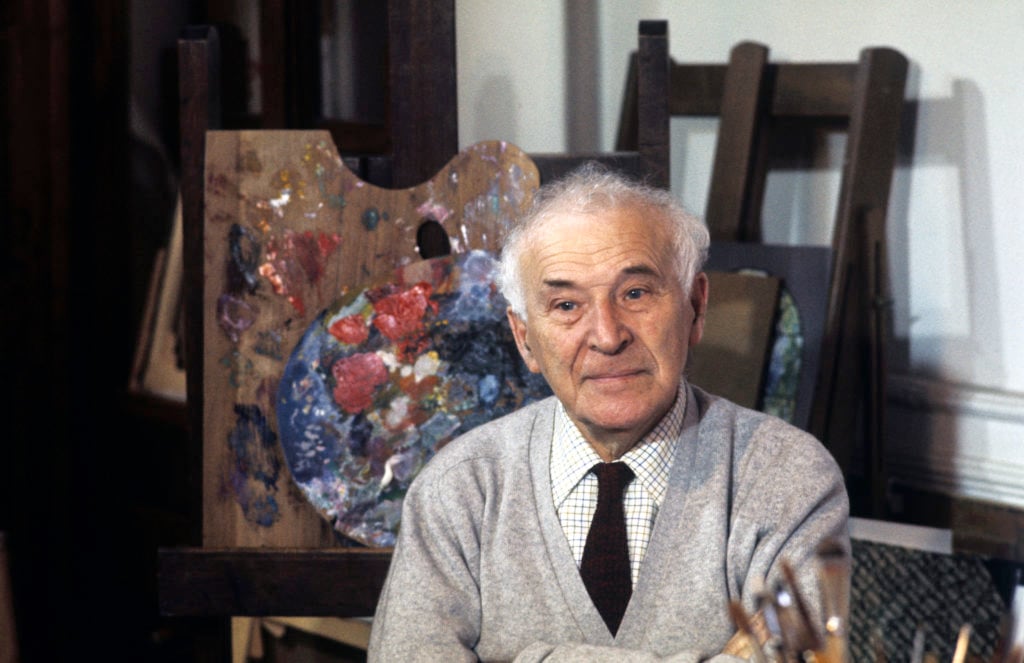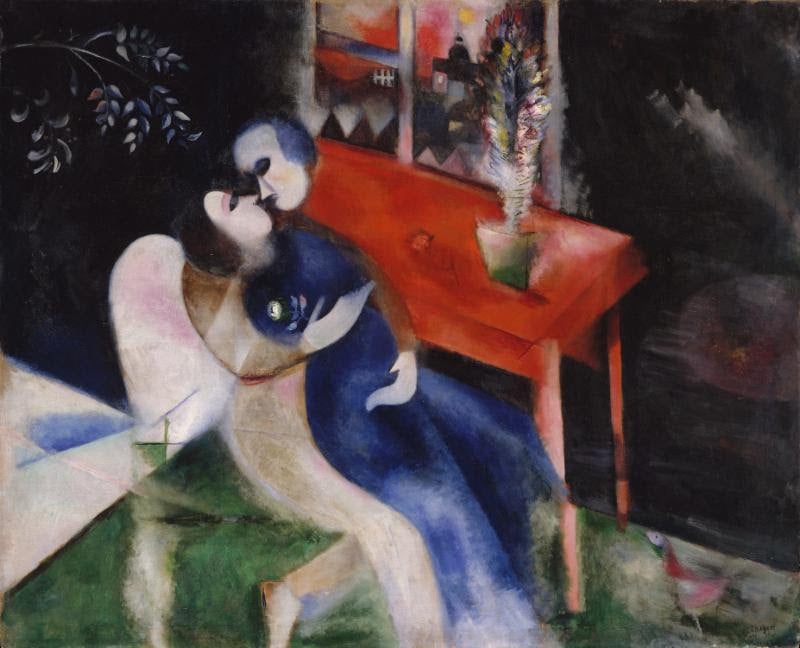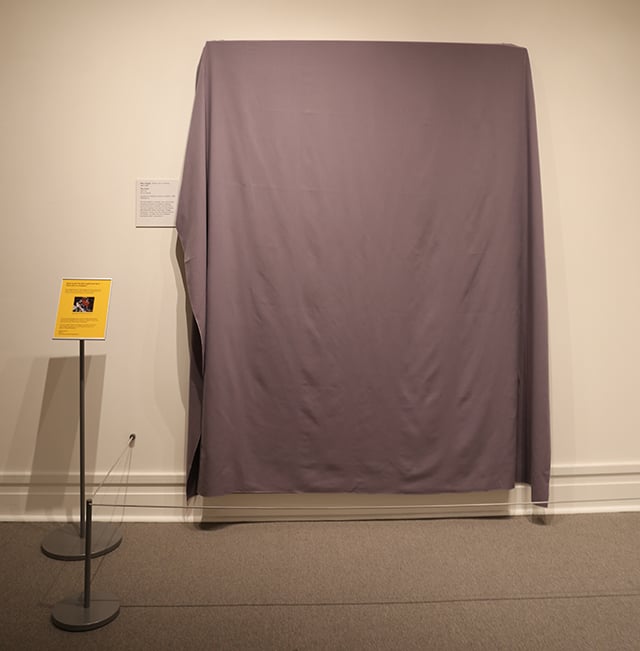Art World
The Met Is Covering Up a Painting by Marc Chagall to Show What the World Would Lose Without the Contributions of Refugees
The move is part of a broader initiative at the museum to mark World Refugee Day.

The move is part of a broader initiative at the museum to mark World Refugee Day.

Sarah Cascone

Visitors to the Metropolitan Museum of Art this week will be unable to see one of the major works in the museum’s collection: Marc Chagall’s The Lovers (1913–14). The painting, although still on view, has been obscured with a drab gray curtain in honor of World Refugee Day (Thursday, June 20).
The museum is hiding the painting to emphasize what the world stands to lose if countries turn away refugees such as Chagall, a Russian Jew forced to flee France with his fiancee, Bella Rosenfeld, after the Nazi invasion. The Lovers depicts the artist and his wife, who resettled in New York.
The Met is also highlighting other works in its collection by refugees by identifying them with yellow labels. Visitors to the museum are encouraged to post images of the works on social media with the hashtag #WorldRefugeeDay.
“The Met is committed to welcoming refugees and celebrating their past and present accomplishments and contributions,” museum director Max Hollein said in a statement.

Marc Chagall, The Lovers (1913–14). Courtesy of the Metropolitan Museum of Art, Jacques and Natasha Gelman Collection, ©2019 Artists Rights Society (ARS), New York.
Other refugee artists on view at the Met’s main location include Max Beckmann, Max Ernst, and Piet Mondrian. At the Met Breuer, a show of recent acquisitions includes refugees Ibrahim El-Salahi, Sopheap Pich, and Mark Rothko.
“Our hope at the Met is that visitors come away from the galleries with a greater awareness of what the idea of home means in the context of those who cannot return to theirs,” Sheena Wagstaff, the museum’s chairman of Modern and contemporary art, said in a statement.

The Met has covered Marc Chagall’s The Lovers (1913–14) for World Refugee Day. Photo courtesy of the Metropolitan Museum of Art.
Other museums recognizing World Refugee Day include the Tate in London, which is also highlighting refugee-made works, and the Phillips Collection in Washington, DC, which is offering free admission and a sneak peek of its new migration- and refugee-themed show, “The Warmth of Other Suns: Stories of Global Displacement” (June 22–September 22, 2019).
According to the International Rescue Committee, which is partnering with the Met for World Refugee Day, nearly 70 million migrants have been forced from their homes worldwide since 2017.